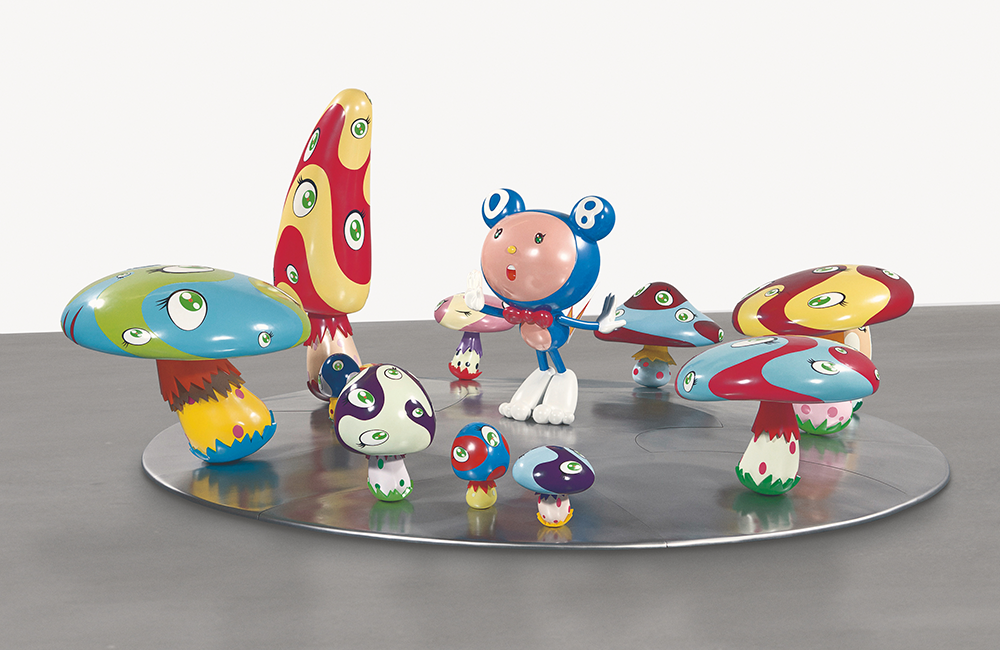Japanese artist Takashi Murakami is known globally for his colorful, smiling flowers, anime-inspired paintings and sculptures, and collaborations in fashion and music. His new exhibition, Stepping on the Tail of a Rainbow, presents an intimate but powerful display of 18 of the artist’s sculptures and paintings. Featuring imagery born of traditional Buddhist and Daoist philosophy and his own imagination, the exhibition displays the artist’s perceptive ability to tap into the suffering of humanity, explore it in vibrant colors and intricate detail, and offer a glimmer of hope.
Alongside several works from the Broad Collection, including the 1999 sculpture DOB in the Strange Forest (Blue DOB), the exhibition also features loans, new work and Augmented Reality (AR) elements that emphasize a more spiritual and healing aspect of Murakami’s creativity. The Broad’s 82-feet-wide painting In the Land of the Dead, Stepping on the Tail of a Rainbow (2014)—created in response to the Great East Japan Earthquake, tsunami and nuclear meltdown in 2011—contains not only devastating tidal waves and piles of skulls, but also Daoist Immortals and mythological creatures, traditional East Asian symbols of hope and healing. On the opposite wall, the 32-feet-wide painting 100 Arhats (2013), on loan from the Maurice and Paul Marciano Art Foundation, depicts Buddhist arhats (disciples who have achieved nirvana). Depictions of these holy men have long illustrated the saving powers of the Buddha’s teachings, particularly following major disasters. Shortly after the 2011 disaster, Murakami began painting arhats, depicting them as grotesque, often comical figures and arranging them almost like pillars, supporting a spiritual ceiling. In both monumental yet intensely detailed works, Murakami mines Japan’s cultural and spiritual heritage to find solace at a time of great pain.

Installation view of “Takashi Murakami: Stepping on the Tail of a Rainbow” at The Broad, Photo: Joshua White / JWPictures.com
He also summons some of Japan’s myriad native gods, or kami (Shinto deities), in the AR element of the exhibition. Visitors may use their Instagram accounts and QR codes on the gallery floor to view kami in the gallery via their phone screens and share pictures of them on social media. Although all spiritual help is surely welcome these days, by trying to access these AR kami, visitors may feel they have interrupted their intimate experience with Murakami’s paintings to play Pokémon Go!
However, one work that does augment reality in a refreshing, reassuring way is the artist’s brand-new painting Unfamiliar People (2022). Here, four large figures stand against a pink ground, their faces grotesquely distorted. Apparently, during the pandemic, many people who Murakami had previously seen as reasonable and kind seemed to change and become aggressively anti-science, and this frightened him. “I sensed that in times of emergency everything about people could change, and I wanted to give form to this feeling.” By giving form to feelings and fears in his intricately detailed and often deeply spiritual art, Murakami reminds us that art can help both makers and viewers begin the healing process.

